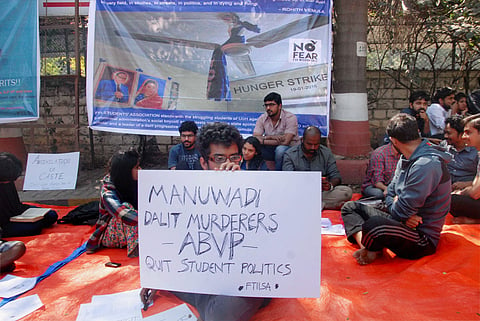

In the socio-political landscape of India, several historical questions have kept the debate going on the injustice meted out to one people by another. One such question – who were the original Indians? – spurned an entirely new brand of politics called Dravidianism. It was based on this theory, that the ‘Aryans invaded the Dravidians’, which many believe to be discredited now, that the entire politics of Tamil Nadu is now based on. Genetic studies have shown in the past that while there were two different sets of populations, Ancestral North Indians (ANI) and Ancestral South Indian (ASI), which spawned the present day Indian population, and there was mixing between them possibly 40,000 years ago.
But yet another politically loaded question has been widely discussed – when did the caste system become what it is today? When did the division of labour solidify into social stratification with no mobility? Defenders of the Hindu faith are also known to blame the British for the closed nature of the caste system.
A new genetic study by scientists at the National Institute of BioMedical Genomics in West Bengal, peer reviewed by a professor at University of Pennsylvania, has shown that the caste system could have frozen into a system disallowing social mobility some 1600 years ago, during the Gupta period. Based on genetic analysis of Indians from different castes and communities, the scientists have been able to trace at what point in Indian history that different castes started practicing endogamy, the practice of marrying within a social group.
In a non-technical summary of the study, the authors state,
Inter-marriage without major restriction was replaced by the formulation and declaration of social norms, leading to the formation of endogamous groups; that is, groups whose members marry only within their groups but not outside. This study, using DNA data, estimated that the transition in India from free intermarriage to endogamy took place about 70 generations ago; that is, about 1600 years ago. Leafing through the pages of Indian history, the authors have pointed out, one finds that during this time the Gupta empire, founded by Maharaja Sri Gupta, covered much of the Indian sub-continent, with Pataliputra (near Patna) as the capital of the empire. A lot of social transformation took place during the Gupta Period. Notable among these was the enforcement of social strictures against marriage between castes, as enshrined in the Dharmasastra. This reveals that some social norms leave imprints on the DNA of people, which can be reconstructed by careful genetic studies.
In the study, a copy of which is available with TNM, the authors state that till about 1600 years ago, there was intermixing between the two main populations, ANI and ASI. But imposition of strict religious code thereafter created the rigid caste structure we know today. The state,
We have provided evidence that gene flow ended abruptly with the defining imposition of some social values and norms. The reign of the ardent Hindu Gupta rulers, known as the age of Vedic Brahminism, was marked by strictures laid down in Dharmasastra—the ancient compendium of moral laws and principles for religious duty and righteous conduct to be followed by a Hindu—and enforced through the powerful state machinery of a developing political economy (15). These strictures and enforcements resulted in a shift to endogamy. The evidence of more recent admixture among the Maratha (MRT) is in agreement with the known history of the post-Gupta Chalukya (543–753 CE) and the Rashtrakuta empires (753–982 CE) of western India, which established a clan of warriors (Kshatriyas) drawn from the local peasantry (15). In eastern and northeastern India, populations such as the West Bengal Brahmins (WBR) and the TB populations continued to admix until the emergence of the Buddhist Pala dynasty during the 8th to 12th centuries CE... Males from dominant populations, possibly upper castes, with high ANI component, mated outside of their caste, but their offspring were not allowed to be inducted into the caste.
The study has also thrown up another important finding. It was earlier believed based on similar studies that Indian ancestors were from only two populations – ANI and ASI. But this study has been able to provide evidence that four ancestral stocks contributed to the genetic diversity of present-day Indians – Indo-European (ANI), Dravidian (ASI), Tibeto-Burman (north-east India) and Austro-Asiatic (fragmented in east and central India; spoken exclusively by the tribals). A fifth ancestral lineage that is dominant among the Negrito tribals (Jarawa and Onge) of Andaman and Nicobar Islands was also identified by the scientists.
This study has explored DNA variation in about 400 unrelated Indians belonging to 20 ethnic groups. Two of these groups are Negrito tribals who reside in the Andaman and Nicobar islands. The remaining 18 groups – both tribal and caste groups – are from mainland India.
In the past, sociologists and historians have refused to accept genetic studies which retell history. This study however does fall in line with what many historians have concluded, that the later Hindu age was responsible for present day caste structures.